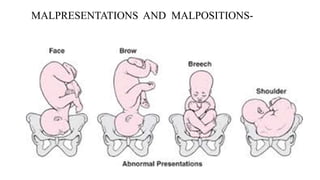By: Nr.Queeneth Umanah
INTRODUCTION
What a joy it is to be pregnant, a greater joy it is to carry the pregnancy to its full term and deliver successfully.
But life does have some twists often with some factors involved and pregnancy may not see its full term.

What Is Premature Labour?
Preterm or premature labor is labor that begins before 37 weeks of pregnancy. A normal pregnancy period (fetal development) is about 40 weeks. A pregnancy is “at the term” at 37 weeks, anything before 37 weeks is called preterm.
Labor:
This includes all processes the body goes through to prepare for childbirth.
In normal labor, the signs include contractions(tightening of the muscles in the uterus) and water breaking(rupture of membranes).
For preterm labor, there is early dilation of the cervix after week 20 and before week 37 of pregnancy.
Preterm labor leads to premature birth but can be intervened to allow the fetus more time to grow and develop in the uterus.
In extreme cases, labor is induced before it reaches term. This is done when there are medical reasons for delivery. Examples are placental eruption, high blood pressure in pregnancy(preeclampsia), or fetal growth restriction.
Signs and Symptoms of Preterm Labour
- Regular or frequent sensations of contractions(abdominal tightening).
- Constant low, dull backache.
- Mild abdominal cramps.
- Vaginal spotting or light bleeding.
- Vaginal discharge changes to watery, mucus-like, or bloody.
- A sensation of pelvic or lower abdominal pressure.
- Preterm rupture of membranes (in a gush or a continuous trickle of fluid after the membrane around the baby breaks or tears).
- Increased pressure in the pelvis or vagina.
- Decreased fetal movements(if movements aren’t felt in an hour).
There are no specific causes for preterm labor but there are certain factors that might be responsible for this.
RISK FACTORS
- Age of the mother, both young (less than 17) and older(above 35).
- Short spacing(an interval of fewer than 12 months- or more than 59 months- between pregnancies.
- Black, non-Hispanic race and ethnicity.
- Presence of a fetal birth defect.
- Vaginal bleeding during pregnancy.
- Polyhydramnios(too much amniotic fluid) or too little amniotic fluid(oligohydramnios).
- Shortened cervix or Irregularly shaped uterus(like septate or bicornuate uterus).
- Previous preterm labor or premature birth, particularly in the most recent pregnancy or in more than one previous pregnancy.
- Pregnancy with twins, triplets, or other multiples.
- Problems with the uterus or placenta.
- Certain infections, particularly of the amniotic fluid and lower genital tract.
- Smoking cigarettes or using illicit drugs.
- Stressful life events, such as the death of a loved one.
- Pregnancy through IVF(Into-vitro fertilization)
- Exposure to teratogens like chemicals, lead, radiation, or other harmful substances.
- Prior surgeries on the cervix or uterus.
- Lack of prenatal care and poor diet.
- Some chronic conditions, such as high blood pressure, diabetes, autoimmune disease, and depression.
- Being underweight or overweight before and during pregnancy.
Complications of preterm labor include a premature birth. Such preterm babies or preemies can develop health problems viz:
- Low birth weight
- Breathing difficulties
- Underdeveloped organs
- Vision problems
- High risk of cerebral palsy, learning disabilities, and behavioral problems.
HOW CAN PREMATURE LABOUR BE PREVENTED?
Preterm labor may happen to any pregnancy but one can do the following to promote a healthy, full-term pregnancy.
- Seek regular prenatal and antenatal care: This is to monitor the health of the mother & baby and to detect any risk factors early.
2 . Eat a Healthy Diet: Good nutrition is essential for a healthy pregnancy. In addition, some research suggests that a diet high in polyunsaturated fatty acids(PUFAs) is associated with a lower risk of premature birth. These fatty acids are found in nuts, fish, and seed oils.
- Consider pregnancy spacing
- Avoid risky substances, such as smoking and illicit drugs.
- Be cautious when using assisted reproductive technology(ART) or IVF(Into-Vitro Fertilisation).
- Manage chronic conditions such as diabetes, high blood pressure, and obesity to reduce the risk of preterm labor.
- Find ways to reduce or manage your stress levels. Take time to relax and rest.
References:
https://www.mayoclinic.org/diseases-conditions/preterm-labor/symptoms-causes/syc-20376842
https://my.clevelandclinic.org/health/diseases/4498-premature-labor








